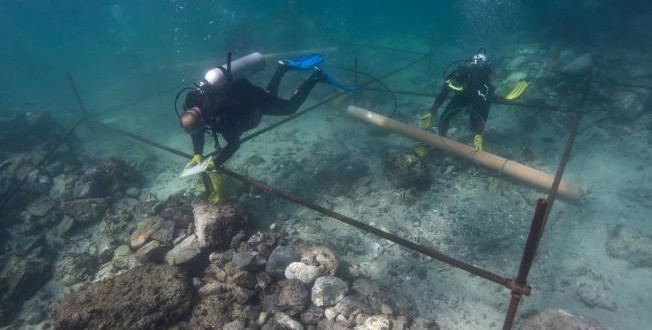The shipwreck is believed to be the Esmeralda, part of a fleet led by legendary Portuguese explorer Vasco da Gama during his second voyage to India (1502-1503).
The wreckage was first discovered in 1998 off the coast of Al Hallaniyah Island in the Arabian Sea, but an archaeological excavation to reveal more about the sunken ship has taken place over the last three years, an interim report published in the International Journal of Nautical Archaeology says.
According to National Geographic and Gulf Business magazine, the study authors are still in the process of analyzing more than 2,500 objects recovered from the wreckage. However, their early findings, based on the discovery of a special Portuguese coin minted for trade with India (one of just two known to exist) and cannonballs engraved with the initials of de Gama’s maternal uncle, Vincente Sodré, commander of the Esmeralda, indicate that it was likely that vessel.
The discovery is expected to be formally announced later on today, and if it is confirmed to have been a ship from de Gama’s fleet, it would be the earliest vessel ever located and recovered from the Age of Exploration, the period between the mid-1500s and the 1700s viewed by many as the golden age of maritime exploration in Europe, the publications added.
Vasco da Gama
Da Gama was famed for identifying the ‘Carreira da India’ – or India Route – in 1498. Four years later he was given 20 ships to carry out an expedition to India for trade of their spices. On his return, he left five ships on the southwest coast of India, including the ship Esmeralda – commanded by da Gama’s uncle, Vincente Sodré.
Instead of waiting in India for further orders, the Esmeralda and the other abandoned ships headed west, to loot and steal Arab ships. However, in May 1503, the ship was torn from the moorings and smashed against the rocks in a giant storm, ultimately destroying and sinking the Esmeralda. This pushed the ship 28 miles off the coast, its whereabouts unknown.
Agencies/Canadajournal
 Canada Journal – News of the World Articles and videos to bring you the biggest Canadian news stories from across the country every day
Canada Journal – News of the World Articles and videos to bring you the biggest Canadian news stories from across the country every day



